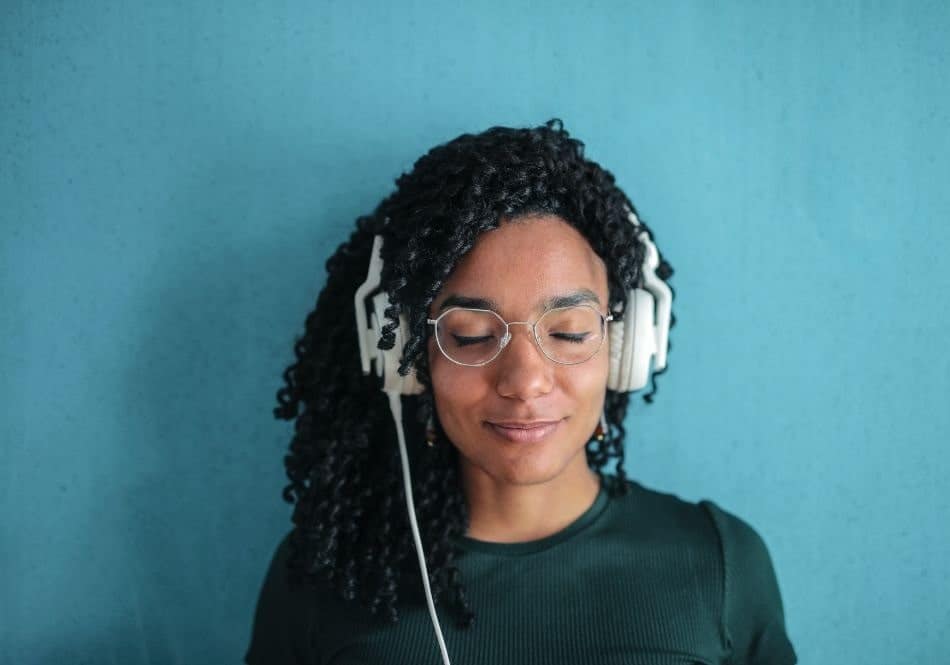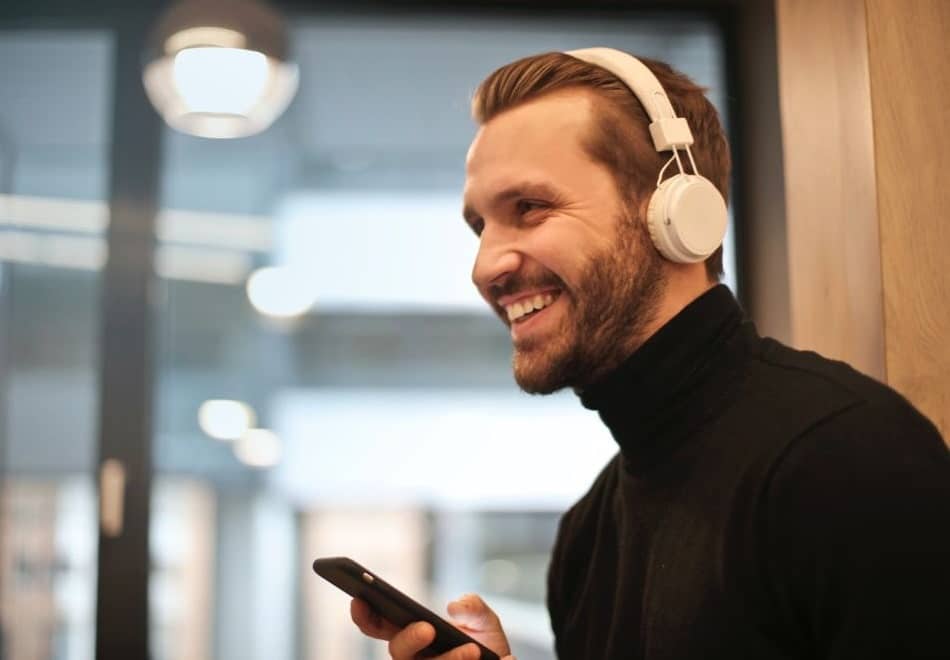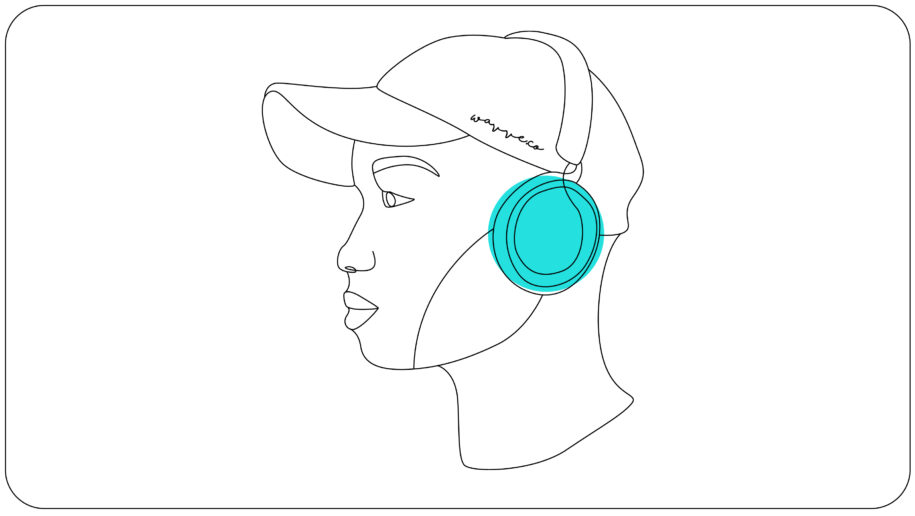There are a few podcast sound design tactics to achieve more creative audio that will keep your listeners coming back for more episodes.
If you want to give your podcast an edge and make sure it stands out, there’s a nifty step to remember before uploading. When done right, this can transform an ordinary audio recording into something truly special.
This entails editing the podcast sound design once you’ve recorded your podcast. Doing so can make an enormous difference in how listeners engage with your audio content.
In this guide, we’ll cover some fundamental elements of podcast sound design to help you create more impactful podcast episodes.
What is Podcast Sound Design?
Podcast sound design is a post-production process that enhances the audio recording of a podcast. It includes elements like adding sound effects and music or making sure the podcast has the right mix.
High-grade sound design is essential when it comes to leveling up your podcast production. This is because podcasts are purely audio, so audio that comes across as higher quality will be better noticed by the audience.
Perfecting your sound design can help you create a truly exceptional audio experience.
Proper podcast sound design can help to add more mood and emotion to audio recordings. It can also make an otherwise monotonous podcast recording more layered and exciting.
Once done properly, this makes podcasts more engaging and enjoyable to listen to.
6 Main Elements of Podcast Sound Design

To get started, here are some elements you should include when editing your podcast recordings in post-production.
1) Add True Podcast Mixing
Mixing is one of the most critical elements of podcast sound design. It is the process where you ensure that all volume levels are set properly.
A solid podcast mix should sound natural, with each sound element flowing into the next without causing interruptions. Every sound should enter at the right volume and intensity. This makes listening to the podcast more enjoyable.
For example, if you start to bring in background music, you don’t just hit play while it’s in maximum volume, as this will be far too distracting. Instead, gently fade the music in and fade it out again.
Creating a great audio mix can be more confusing when you record your podcast in stereo instead of mono. Stereo allows you to control the volume levels of the left and right speaker separately, while mono records these levels the same.
If you want to add more “space” to your podcast mix and make it sound interesting, then you can record in stereo. However, standard podcast conversations are generally recorded in mono. Why? Because people typically create audio from just their one (mono) mouth. Plus, it’s distracting when your left ear has one person talking in it and your right ear has the other person talking in it.
Your podcast sound design should match the audio experience your listeners have in real life. And our ears are amazing at mixing naturally.
2) Set the Atmosphere of Your Podcast

Atmosphere, or ambiance, refers to the background noise you lay down behind the podcast speaker. This ambient music isn’t meant to be noticeable, but it sets the mood for the podcast.
Ambient sounds can include elements like nature noises, the sound of a buzzing light or even an empty room that has a slight echo off a distant wall. NPR does an amazing job at setting the right atmosphere in their programs.
Ambient sounds should not distract the listener in any way. Instead, they should make a significant difference in how the podcast story is told.
3) Incorporate Background Music
Background music in a podcast can change the whole mood or tone of your podcast. Music can trigger emotions and help to set the scene.
When it comes to podcast sound design, you will generally only use music in two ways. Either when playing an intro jingle or by adding subtle background music while you talk over it.
Background music shouldn’t be too distracting – but more evident than the atmospheric or ambient sounds. Many esteemed podcasters use background music to help transition between different themes or sections in the podcast, such as preparing for an ad break.
One rule of thumb here is that the wrong music for your audience can make them tune you out entirely, so choose the song carefully and don’t use for long podcasts.
4) Consider Audio Effects for Your Sound Design

Audio effects, or SFX, are “fake” sounds you add to your podcast. These sounds are typically not recorded through your microphone but are often computer-generated, or sampled elsewhere.
You can add audio effects to help tell a story, make something easier for your listeners to understand, or just make your podcast fun to listen to.
Strategically adding audio effects to your podcast is an effective way to make your podcast stand out and bring a sense of uniqueness to your brand.
Many short-form video influencers are now using sound effects to keep people’s attention longer.
5) Add Foley
Foley pertains to recording and recreating “real” sound effects. While it is usually done in movies, you can also add it to your podcast sound design.
For example, you might tell a story about a person entering a room. In this case, you could record the sound of a door opening and record your footsteps walking across the room.
Adding these sound effects to your podcast can provide an extra layer of storytelling and make your story more gripping for your audience to experience.
6) Include Voiceovers in Your Podcast
Voiceovers are when you record an additional segment, intro, ad read, commentary, or even overdubs to record proper names and facts you flubbed during recording.
Some podcast hosts even insert additional commentary to direct their editor better during post-production, almost like verbal notes instead of written ones.
Podcasts are basically long voiceovers, but you can use actual voiceovers as a helpful podcast sound design tactic to add additional information, context, or texture if multiple people are talking.
Many podcasters add voiceover segments during post-production to thank their sponsors or read out an ad.
Summary
You don’t have to be a Grammy award-winning sound engineer to experiment with different elements that make up podcast sound design.
Adding this layer to your podcast can make a significant difference to your final podcast quality. By simply mixing it well and adding a few subtle effects and sounds, your podcast monologue can become more enticing to your listeners.
Committing to podcast sound design can also help you win over more listeners who stick around longer.
I’m the CEO of Wavve. I love encouraging creators and entrepreneurs to share their stories and lead with purpose.

